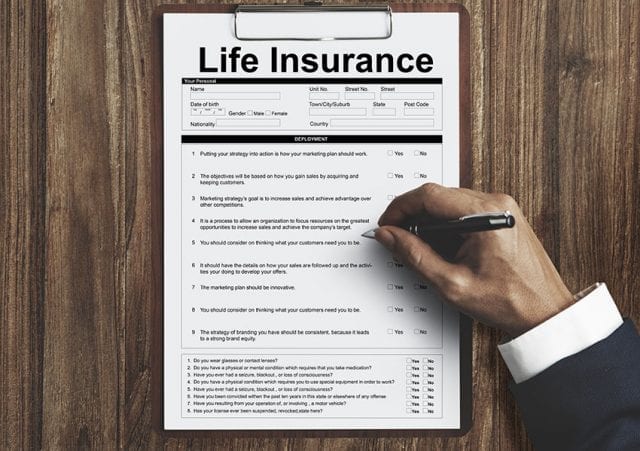
Buying life insurance is always a smart thing to do. Not only is this insurance in case of any kind of emergency, but it is also a pretty great financial investment.
However, there isn’t only one type of life insurance; quite the contrary there are many. Remembering all of them could also be a nightmare if we take into account the various options and clauses.
But, life insurance can be mainly categorized into two: term life and permanent life insurance and everything we’ll talk about will be a subcategory of these two. With all that said, we’re also going to talk more in-depth regarding the various subtypes of each.
So, without wasting too much time, let’s dwell deeper into the article.
Term Life

The great thing about the term life type is that it is covers anything between five and thirty years. Truthfully speaking, most people with term life insurance outlive the policy, which is a good thing.
Term life is mostly taken as a safe means to protect one’s finances in the case of an emergency. And since people mostly outlive the policy, it results in a financial boost that has accumulated throughout the years of paying for it.
Permanent Life
The other category of insurance is permanent life. When it comes to getting this one, you have three major categories to choose from; whole, universal, and indexed universal.
Each three differ in length of coverage, monthly rates, and how the invested cash is being treated.
The main difference between the previous one and this one is that permanent life is supposed to cover for the duration of your life. This means that the insurance will still cover you even if you’re in your later years of life. Again, both of these are a pretty great financial investment.
Since you have paid a certain rate each month, the rates add up for the duration of the coverage. When your coverage ends, you get a return on your investment, a tax-free return, paid mostly in cash.
Whole Life
Now that we discussed the two main categories, let’s dwell deeper into each individual subcategory.
We’ll start with our whole life. Whole life is best for people that want to leave their children an inheritance. This insurance is paid for the duration of life, with each paid sum subjected to low-interest rates that can rack up some pretty great returns.
Whole life is a very popular option since it covers life insurance and a savings account.
Universal Life

A very popular option when it comes to flexibility, universal life lets you split the paid cash. For example, you could equally split the cash to go into your savings accoutn and your death bed. You could also determine how much goes into what, but do expect rates to change for both.
Like the previous one, universal life covers for the duration of your life, or until you reach 95,100, or 121 years of age.
Indexed Universal Life
Indexed universal is a type of universal insurance that lets you choose where to invest your money. For instance, instead of keeping them in a savings account, the insurance company presents the option to invest them in either the S&P 500 or NASDAQ.
This is a very popular option since it allows people to grow their cash value without knowing a single thing about investing, stocks, or the market.
Enquiring about a specific type is nothing short of convenience nowadays. If you happened to be looking for a reliable insurance company that has the best rates, pays within 24 hours, and requires no medical exams, then make sure to visit goldenmemorialinsurance.com.
Variable Life
This one is quite similar to indexed and whole life, in a sense that your money doesn’t necessarily go into a savings account. It is a type of life insurance that lets you choose where your money goes.
Because of that, you can either experience higher returns, or of course, lower returns if the investor chooses to perform poorly. This type might prove like a smart move, but it isn’t recommended for those that don’t really have an understanding of investments.
Variable Universal Life

We mentioned that universal life lets you choose how much of your money goes into your death benefit, and how much into your savings account. Well, variable universal life lets you do that, while also allowing you to choose how the company invests your money.
Fully Underwritten Life
This insurance plan is by far the most common in the subcategory of underwritten insurances.
This type requires you to take a medical exam to determine your health. Based on that, you are presented with a plan that generally will offer you the best options and rates. However, there are two major downsides to using this one, and those are:
The whole process of examining and scheduling takes longer
And people with health issues or health conditions are generally turned down for coverage.
This plan is the industry standard, and it can only benefit people with excellent medical records.
Simplified Issue Life
Simplified Issue life is yet another underwritten insurance coverage that doesn’t require to take a medical exam, but to fill up a medical questionnaire.
This questionnaire will ask you questions related to yours and your family’s medical history. It asks for any conditions, health risks, and asks for your medical records as a way to back up your answers.
Simple said, it does require a medical exam, but there is no way to cheat the system.
Guaranteed Issue Life

This one is best for those that already have existing health conditions, issues, and various diseases. Although determining the policies is different for every person, it’s your best shot at getting decent life insurance if you already have a preexisting health condition.
Final Expense Life
This type is different than the rest since it can be subcategorized as an insurance plan that helps cover costs for funerals and medical bills.
This plan is usually short-term (10 years max) and it presents to you an unusual option that is very cheap, but could come in handy in certain situations.
The only downside to this plan is that the insurance company will require you to wait up to two years before the plan could take into effect. This means that the person who is a person insured will not receive any money if he happens to die before the plan kicks into motion.








